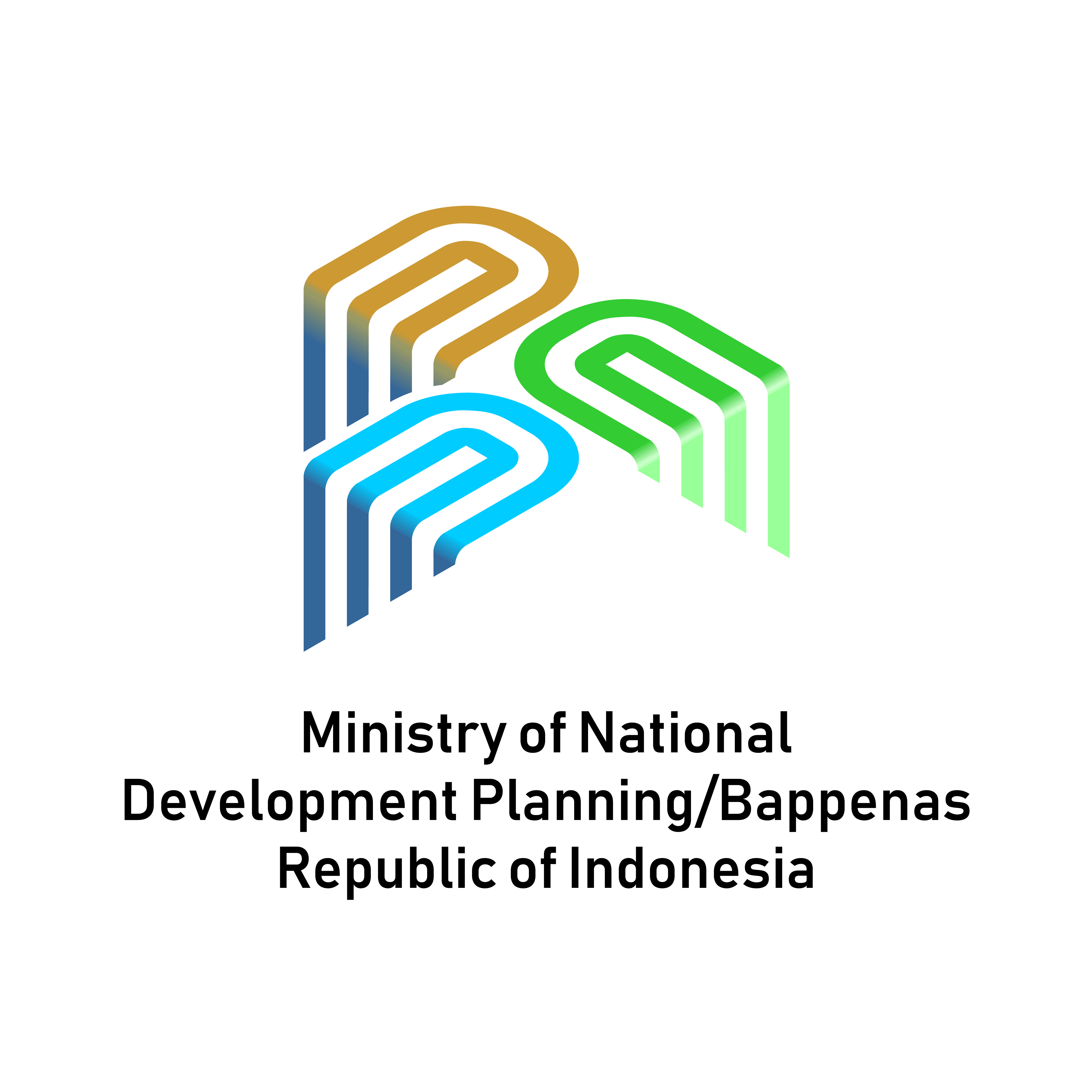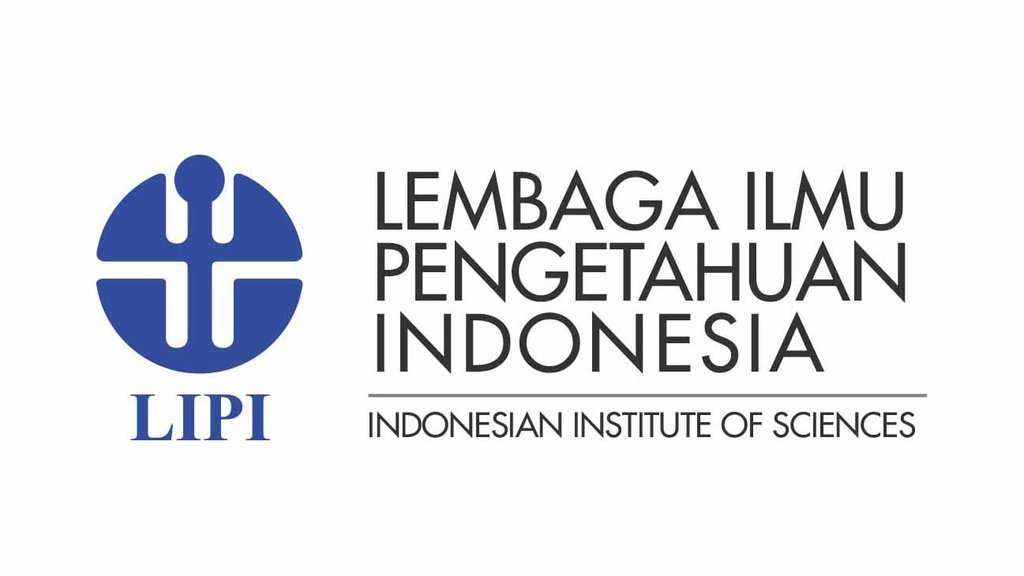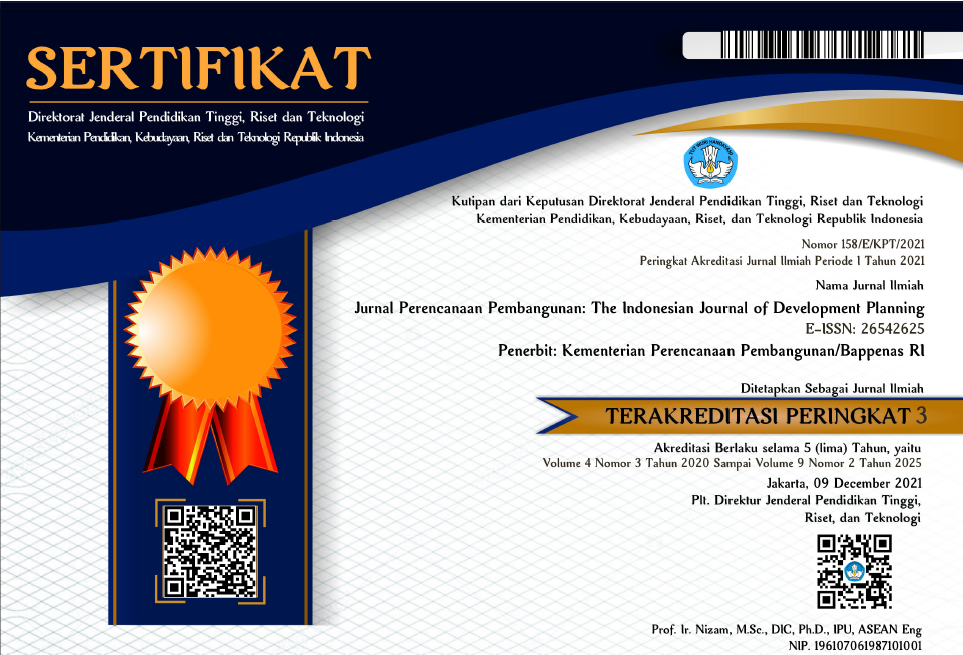Harmonization of Trading Partners Between Indonesia–Italy: Empirical Calculations of Selected Agricultural Commodities
DOI:
https://doi.org/10.36574/jpp.v8i1.539Keywords:
agricultural commodities, export, GDP share of agriculture, panel data regression, Indonesia–ItalyAbstract
Initially, exports were perceived as the prestige and dignity of a nation. However, in terms of terminology, the essence of export flows is complementarity between countries, where each party has advantages, competition and excess production of a particular product to offer. The orientation of this study is to examine the relationship between tobacco exports, coffee exports, and wine exports to GDP growth in Italy–Indonesia. There are key variables which are divided into two case studies including tobacco export volume, FoB on tobacco exports, coffee export volume, FoB on coffee exports, green grape export volume, CIF on green grape exports, red wine export volume, CIF on red wine exports, GDP share of agriculture in Indonesia and Italy. The fundamental difference in wine exports from the two is that Indonesia uses green grapes and for Italy it uses red wine. The method is set through a panel data regression approach and samples for the 2013–2021. The econometric results explain that tobacco exports and coffee exports have a significant effect on the GDP share of agriculture in Indonesia–Italy. Likewise, CIF on exports of green grapes and red wines which have a significant effect on the GDP share of agriculture in both nations. These findings inspire more urgent implications for the topic of agricultural commodity exports and become an integrated whole.
Downloads
References
Aday, S. & Aday, M. S. (2020). Impact of COVID-19 on the food supply chain. Food Quality and Safety 4(4): 167–180. https://doi.org/10.1093/fqsafe/fyaa024.
Ahmad, J. (1978). Import substitution—A survey of policy issues. The Developing Economies 16(4): 355–372. https://doi.org/10.1111/j.1746-1049.1978.tb01070.x.
Ahn, S. C., Lee, Y. H. & Schmidt, P. (2013). Panel data models with multiple time-varying individual effects. Journal of Econometrics 174(1): 1-14. https://doi.org/10.1016/j.jeconom.2012.12.002.
Ahsan, A., Wiyono, N. H., Veruswati, M., Adani, N., Kusuma, D. & Amalia, N. (2020). Comparison of tobacco import and tobacco control in five countries: Lessons learned for Indonesia. Globalization and Health 16(1): 65. https://doi.org/10.1186/s12992-020-00595-y.
Akande, R. & Iteshi, C. V. (2020). The principles and importance of free on board (F.O.B.) and cost insurance freight (C.I.F.) Contracts in the contract of international sales of goods. International Journal of Innovative Research & Development 9(3): 93-99. http://dx.doi.org/10.24940/ijird%2F2020%2Fv9%2Fi3%2FMAR20003.
Al-Abdulkader, A. M., Al-Namazi, A. A., Al-Turki, T. A., Al-Khuraish, M. M. & Al-Dakhil, A. I. (2018). Optimizing coffee cultivation and its impact on economic growth and export earnings of the producing countries: The case of Saudi Arabia. Saudi Journal of Biological Sciences 25(4): 776–782. https://doi.org/10.1016/j.sjbs.2017.08.016.
Al-Fadhat, F. (2022). Indonesia’s G20 presidency: Neoliberal policy and authoritarian tendencies. Australian Journal of International Affairs 76(6): 617-623. https://doi.org/10.1080/10357718.2022.2070598.
Anderson, K. (2018). Australian wine industry competitiveness: Why so slow to emerge?. Australian Journal of Agricultural and Resource Economics 62(4): 507-526. https://doi.org/10.1111/1467-8489.12276.
Aprianto, W., Syaipudin, U. & Muslimin. (2022). Contribution of Lampung coffee commodity to the economic improvement of Lampung Province. Peradaban Journal of Economic and Business 1(1): 9–16.
Astuti, I., Oktavilia, S. & Rahman, A. (2016). The international balance of payments role in the economy of Indonesia. JEJAK: Jurnal Ekonomi Dan Kebijakan 8(2): 173-183. http://dx.doi.org/10.15294/jejak.v8i2.6169.
Austin, P. C., Latouche, A. & Fine, J. P. (2020). A review of the use of time-varying covariates in the Fine-Gray subdistribution hazard competing risk regression model. Statistics in Medicine 39(2): 103–113. https://doi.org/10.1002/sim.8399.
Ayuda, M., Ferrer-Pérez, H. & Pinilla, V. (2020). Explaining world wine exports in the first wave of globalization, 1848–1938. Journal of Wine Economics 15(3): 263-283. https://doi.org/10.1017/jwe.2020.4.
Ayuningtyas, D. A., Tuinman, M. A., Prabandari, Y. S. & Hagedoorn, M. (2021). Smoking cessation experience in Indonesia: Does the non-smoking wife play a role?. Frontiers in Psychology 12: 618182. https://doi.org/10.3389/fpsyg.2021.618182.
Bader, P., Boisclair, D. & Ferrence, R. (2011). Effects of tobacco taxation and pricing on smoking behavior in high risk populations: A knowledge synthesis. International Journal of Environmental Research and Public Health 8(11): 4118–4139. https://doi.org/10.3390/ijerph8114118.
Baltagi, B. H. (1998). Pooling time-series of cross-section data. In: Econometrics. Springer, Berlin, Heidelberg. https://doi.org/10.1007/978-3-662-00516-3_12.
Bandinelli, R., Acuti, D., Fani, V., Bindi, B. & Aiello, G. (2020). Environmental practices in the wine industry: An overview of the Italian market. British Food Journal 122(5): 1625-1646. https://doi.org/10.1108/BFJ-08-2019-0653.
Berawi, M. A. (2022). G20 Presidency of Indonesia: collective and inclusive agendas for world development. International Journal of Technology 13(1): 1-4. https://doi.org/10.14716/ijtech.v13i1.5479.
Blavasciunaite, D., Garsviene, L. & Matuzeviciute, K. (2020). Trade balance effects on economic growth: Evidence from European Union Countries. Economies 8(3): 54. https://doi.org/10.3390/economies8030054.
Bosma, U. & Curry-Machado, J. (2012). Two islands, one commodity: Cuba, Java, and the global sugar trade (1790-1930). New West Indian Guide 86(3-4): 237-262. https://doi.org/10.1163/13822373-90002415.
Camisón-Haba, S. & Clemente-Almendros, J. A. (2020). A global model for the estimation of transport costs. Economic Research-Ekonomska Istraživanja 33(1): 2075-2100. https://doi.org/10.1080/1331677X.2019.1584044.
Caponnetto, P., Inguscio, L., Saitta, C., Maglia, M., Benfatto, F. & Polosa, R. (2020). Smoking behavior and psychological dynamics during COVID-19 social distancing and stay-at-home policies: A survey. Health Psychology Research 8(1): 9124. https://doi.org/10.4081/hpr.2020.9124.
Cardoso, B. F., Bentivoglio, D., Giampietri, E., Finco, A. & Shikida, P. F. A. (2016). The Italian coffee import: A gravity model analysis. Italian Review of Agricultural Economics 71(1): 127-133. https://doi.org/10.13128/REA-18633.
Casini, L., Corsi, A. M. & Goodman, S. (2009). Consumer preferences of wine in Italy applying best?worst scaling. International Journal of Wine Business Research 21(1): 64-78. https://doi.org/10.1108/17511060910948044.
Chaloupka, F. J., Yurekli, A. & Fong, G. T. (2012). Tobacco taxes as a tobacco control strategy. Tobacco Control 21(2): 172–180. https://doi.org/10.1136/tobaccocontrol-2011-050417.
Chuah, J. (2007). The free on board (FOB) seller as shipper. Student Law Review 50: 54-56.
Ciliberti, S., Chiodini, G. & Frascarelli, A. (2019). The role of the CAP in fostering the diffusion of institutional hybrid arrangements: Three case studies from Italy. Italian Review of Agricultural Economics 73(3): 17-35. https://doi.org/10.13128/REA-25102.
Clancy, L., Gallus, S., Leung, J. & Egbe, C. O. (2020). Tobacco and COVID-19: Understanding the science and policy implications. Tobacco Induced Diseases18: 105. https://doi.org/10.18332/tid/131035.
Colombini, D. C. (2015). Wine tourism in Italy. International Journal of Wine Research 7: 29–35. https://doi.org/10.2147/IJWR.S82688.
Corsi, A. M., Marinelli, N. & Sottini, V.A. (2010). Italian wines and Asian markets: Opportunities and threats under new policy scenarios and competitive dynamics. The World’s Wine Markets by 2030: Terroir, Climate Change, R&D and Globalization. In: Australian Agricultural and Resource Economics Society, Conference (54th), February 10-12, 2010, Adelaide, Australia.
Couch, D. L., Robinson, P. & Komesaroff, P. A. (2020). COVID-19—Extending surveillance and the panopticon. Journal of Bioethical Inquiry 17(4): 809–814. https://doi.org/10.1007/s11673-020-10036-5.
Darma, S., Lestari, D. & Darma, D. C. (2022). The productivity of wineries – An empirical in Moldova. Journal of Agriculture and Crops 8(1): 50–58. https://doi.org/10.32861/jac.81.50.58.
Dascal, D., Mattas, K. & Tzouvelekas, V. (2022). An analysis of EU wine trade: A gravity model approach. International Advances in Economic Research 8(2): 135–147. https://doi.org/10.1007/BF02295344.
Dodd, E. (2022). The archaeology of wine production in Roman and pre-Roman Italy. American Journal of Archaeology 126(3): 443–480. https://doi.org/10.1086/719697.
Doering, T., Suresh, N. C. & Krumwiede, D. (2020). Measuring the effects of time: repeated cross-sectional research in operations and supply chain management. Supply Chain Management 25(1): 122-138. https://doi.org/10.1108/SCM-04-2019-0142.
Eck, K. & Hatz, S. (2020). State surveillance and the COVID-19 crisis. Journal of Human Rights 19(5): 603-612. https://doi.org/10.1080/14754835.2020.1816163.
Emam, A. A., Abass, A. S., Elmulthum, N. A. & Elrasheed, M. (2021). Status and prospects of agricultural growth domestic product in the Kingdom of Saudi Arabia. SAGE Open 11(1): 1–10. https://doi.org/10.1177/2158244021100545.
Fatkurrohim, F., Hanani, N. & Syafrial, S. (2022). The impact of input and output prices on Indonesian coffee production and trade performance. Habitat 33(1): 33–43. https://doi.org/10.21776/ub.habitat.2022.033.1.4.
Fernando, Y., Fitrianingrum, A. & Richardson, C. (2017). Organisational determinants of export performance: Evidence from exporting firms in Batam, Indonesia. International Journal of Business Excellence 11(1): 95-119. https://doi.org/10.1504/IJBEX.2017.10000679.
Fitriadi, F., Jiuhardi, J., Busari, A., Ulfah, Y., Hakim, Y. P., Kurniawan, E. & Darma, D. C. (2022a). Using correlation analysis to examine the impact of Covid-19 pandemics on various socioeconomic aspects: Case study of Indonesia. Geographica Pannonica 26(2): 128–141. https://doi.org/10.5937/gp26-37049.
Fitriadi, F., Jiuhardi, J., Busari, A., Ulfah, Y., Hakim, Y. P., Kurniawan, E. & Darma, D. C. (2022b). Using correlation to explore the impact of Coronavirus disease on socioeconomics. Emerging Science Journal 6(Special Issue COVID-19 Emerging Research): 165–180. http://dx.doi.org/10.28991/esj-2022-SPER-012.
Fitriani, F., Arifin, B. & Ismono, H. (2021). Indonesian coffee exports and its relation to global market integration. Journal of Socioeconomics and Development 4(1): 120-133. https://doi.org/10.31328/jsed.v4i1.2115.
Fung, K. C., Garcia-Herrero, A. & Siu, A. (2010). Developing Countries and the World Trade Organization: A foreign influence approach. Journal of International Trade & Economic Development 19(1): 187-201. https://doi.org/10.1080/09638190903327302.
Galinato, G. I., Olanie, A. Z. & Yoder, J. K. (2017). The trade and health effects of tobacco regulations. Journal of Agricultural and Resource Economics 42(3): 350-371. https://doi.org/10.22004/ag.econ.264066.
Ganeshamurthy, A. N., Satisha, G. C. & Patil, P. (2011). Potassium nutrition on yield and quality of fruit crops with special emphasis on banana and grapes. Karnataka Journal of Agricultural Sciences 24(1): 29–38.
Garzillo, E. M., Monaco, M. G .L., Corvino, A. R., Giardiello, A., Arnese, A., Napolitano, F., Di Giuseppe, G. & Lamberti, M. (2022). Smoking habits and workplace health promotion among University students in Southern Italy: A cross-sectional pilot investigation. International Journal of Environmental Research and Public Health 19(17): 10682. https://doi.org/10.3390/ijerph191710682.
Geçer, E. N. & Yerlikaya, S. (2018). Wine culture in the history of Italy. Social Sciences Studies Journal 4(14): 371-375. https://doi.org/10.26449/sssj.332.
Gizaw, N., Abafita, J. & Merra, T. M. (2022). Impact of coffee exports on economic growth in Ethiopia; An empirical investigation. Cogent Economics & Finance 10(1): 2041260. https://doi.org/10.1080/23322039.2022.2041260.
Goldin, I. (2019). Why do some Countries develop and others not?. In: Dobrescu, P. (eds) Development in Turbulent Times. Springer, Cham. https://doi.org/10.1007/978-3-030- 11361-2_2.
Gunawan, G., Cahyono, A. E. & Santoso, A. (2018). Local superior commodities, regional specializations and regional economic contributions. Journal of Distribution Science 16(9): 35-41. http://dx.doi.org/10.15722/jds.16.9.201809.35.
Ha, N. T. V. (2022). Surplus in balance of payments and some policy recommendations for Vietnam. Russian Journal of Vietnamese Studies 6(1): 28–39. https://doi.org/10.54631/VS.2022.61-105384.
Harada, K. & Nishitateno, S. (2021). Measuring trade creation effects of free trade agreements: Evidence from wine trade in East Asia. Journal of Asian Economics 74: 101308. https://doi.org/10.1016/j.asieco.2021.101308.
Hartoyo, F. Z. R., Tandarto, K., Sidharta, V. & Tenggara, R. (2022). the correlation between coffee consumption and gastroesophageal reflux disease. The Indonesian Journal of Gastroenterology, Hepatology and Digestive Endoscopy 23(1): 11-16. https://doi.org/10.24871/231202211-16.
Hertzberg, A. & Malorgio, G. (2010). Wine demand in Italy: An analysis of consumer preferences. New Medit 7(4): 40-46.
Huang, J., Gwarnicki, C., Xu, X., Caraballo, R. S., Wada, R. & Chaloupka, F. J. (2018). A comprehensive examination of own- and cross-price elasticities of tobacco and nicotine replacement products in the U.S. Preventive Medicine 117: 107–114. https://doi.org/10.1016/j.ypmed.2018.04.024.
Hummels, D. & Klenow, P. J. (2005). The variety and quality of a nation's exports. American Economic Review 95(3): 704-723. https://doi.org/10.1257/0002828054201396.
Holtz-Eakin, D., Newey, W. & Rosen, H. S. (1998). Estimating vector autoregressions with panel data. Econometrica 56(6): 1371-1395. https://doi.org/10.2307/1913103.
Kariyoto, K. (2016). The analysis of freight transportation cost of superior commodities in East Java. The International Journal of Accounting and Business Society 24(2): 70–79. https://doi.org/10.21776/ub.ijabs.2016.024.2.05.
Kropko, J. & Kubinec, R. (2020). Interpretation and identification of within-unit and cross-sectional variation in panel data models. PloS one 15(4): e0231349. https://doi.org/10.1371/journal.pone.0231349.
Kuzminov, M. (2017). Determination of agricultural export features in developing countries. Technology Audit and Production Reserves 5(37): 49-54. https://doi.org/10.15587/2312-8372.2017.113188.
Lin, J. Y. & Rosenblatt, D. (2012). Shifting patterns of economic growth and rethinking development. Journal of Economic Policy Reform 15(3): 171-194. https://doi.org/10.1080/17487870.2012.700565.
Mabeta, J., Bett, H. K., Kiprop, S. K. & Gutema, T. Y. (2015). Growth of tobacco exports in Zambia: An ARDL approach. Journal of Economics and Sustainable Development 6(18): 178-188.
Macedo, A., Gouveia, S. & Rebelo, J. (2019). Does wine quality have a bearing on exports?. AGRIS on-line Papers in Economics and Informatics 11(4): 49-59. https://doi.org/10.7160/aol.2019.110405.
Maicas, S. & Mateo, J. J. (2020). Sustainability of wine production. Sustainability 12(2): 559. https://doi.org/10.3390/su12020559.
Mariani, A., Pomarici, E. & Boatto, V. (2012). The international wine trade: Recent trends and critical issues. Wine Economics and Policy 1(1): 24–40. https://doi.org/10.1016/j.wep.2012.10.001.
Marinov, E. (2015). Economic determinants of regional integration in developing Counties. International Journal of Business and Management III(3): 22-39. https://doi.org/10.20472/BM.2015.3.3.003.
Mishra, S. & Mishra, M. B. (2013). Tobacco: Its historical, cultural, oral, and periodontal health association. Journal of International Society of Preventive & Community Dentistry 3(1): 12–18. https://doi.org/10.4103/2231-0762.115708.
Mogues, T. (2020). Food markets during COVID-19. Fiscal Affairs, International Monetary Fund, Washington, DC.
Mohan, S. (2007). Reforming agricultural trade among developing countries. World Trade Review 6(3): 397-411. https://doi.org/10.1017/S1474745607003448.
Monge, M. & Lazcano, A. (2022). Commodity prices after COVID-19: Persistence and time trends. Risks 10(6): 128. https://doi.org/10.3390/risks10060128.
Musona, J. (2016). Analyzing the impact of changes in tobacco trade barriers and cigarette taxes on developing countries: A global simulation model approach. Master’s Thesis. Faculty of Natural Resources and Agricultural Sciences, Swedish University of Agricultural Sciences, Uppsala, Sweden.
Munarini, E., Stival, C., Boffi, R., Lugoboni, F., Veronese, C., Tinghino, B., Agnelli, G. M., Lugo, A., Gallus, S. & Giordano, R. (2022). Factors associated with a change in smoking habit during the first COVID-19 lockdown: An Italian cross-sectional study among ever-smokers. BMC Public Health 22(1): 1046. https://doi.org/10.1186/s12889-022-13404-5.
Murindahabi, T., Li, Q., Nisingizwe, E. & Ekanayake, B. (2019). Do coffee exports have impact on long-term economic growth of countries?. Agricultural Economics–Czech 65(8): 385–393. https://doi.org/10.17221/283/2018-AGRICECON.
Nasim, E. S. & Gunawijaya, J. (2021). Measuring the export potential of tobacco industry and Indonesian tobbaco products. Jurnal Ilmiah Manajemen dan Bisnis 7(1): 1-35. http://dx.doi.org/10.22441/jimb.v7i1.11490.
Nkhoma, N., Mgale, Y. J. & Yan, Y. X. (2021). Determinants of export demand function for Malawi tobacco. Open Journal of Business and Management 9(4): 1836-1848. https://doi.org/10.4236/ojbm.2021.94099.
Nguyen, D. B. (2019). A new examination of the impacts of regional trade agreements on international trade patterns. Journal of Economic Integration 34(2): 236-279. https://doi.org/10.11130/jei.2019.34.2.236.
Niu, H., Zhang, P., Li, B., Sun, S., Yang, X. & He, F. (2021). Tobacco as a potential raw material for drug production. Acta Physiologiae Plantarum 43(12): 163. https://doi.org/10.1007/s11738-021-03338-7
Nugroho, B. (2015). The use of CIF Incoterms in Indonesia’s import declarations. World Customs Journal 9(1): 91-102.
Nugroho, A. D. & Lakner, Z. (2022). Effect of globalization on coffee exports in producing countries: A dynamic panel data analysis. Journal of Asian Finance, Economics and Business 9(4): 419–429. https://doi.org/10.13106/jafeb.2022.vol9.no4.0419.
Nurhasanah, S. & Dewi, C. (2019). The emergence of local coffee shops in Indonesia as a counter to American culture hegemony. RUBIKON: Journal of Transnational American Studies 6(1): 1-11. https://doi.org/10.22146/rubikon.v6i1.61485.
Oktafarel, K. M., Mario, M., Augusta, D. N., Arifin, A., Ekomadyo, A. S. & Susanto, V. (2021). Coffee culture and heritage: Demystifying the heritage value of coffee shops inside historical buildings in Jakarta and Bandung. Local Wisdom 13(1): 51–66. https://doi.org/10.26905/lw.v13i1.5088.
Piñeiro, M. V. & Maffi, L. (2018). The diffusion of Italian wine in the United States (1861-1914)*. Revista Iberoamericana de Viticultura, Agroindustria y Ruralidad, 5(15): 176-196.
Pinilla, V. & Ayuda, M-I. (2022). The political economy of the wine trade: Spanish exports and the international market, 1890–1935. European Review of Economic History 6(1): 51–85. https://doi.org/10.1017/S1361491602000035.
Pomarici, E., Corsi, A., Mazzarino, S. & Sardone, R. (2021). The Italian wine sector: Evolution, Structure, competitiveness and future challenges of an enduring leader. Italian Economic Journal 7(2): 259–295. https://doi.org/10.1007/s40797-021-00144-5.
Ponte, S. (2021). Bursting the bubble? The hidden costs and visible conflicts behind the Prosecco wine ‘miracle’. Journal of Rural Studies 86: 542-553. https://doi.org/10.1016/j.jrurstud.2021.07.002.
Popova, V., Tumbarski, Y., Ivanova, T., Hadjikinova, R. & Stoyanova, A. (2019). Tobacco resinoid (Nicotiana tabacum L.) as an active ingredient of cosmetic gels. Journal of Applied Pharmaceutical Science 9(9): 111-118. https://doi.org/10.7324/JAPS.2019.90916.
Purnomo, M., Yuliati, Y., Shinta, A. & Riana, F. D. (2021). Developing coffee culture among indonesia’s middle-class: A case study in a coffee-producing country. Cogent Social Sciences 7(1): 1949808. https://doi.org/10.1080/23311886.2021.1949808.
Revindo, M. D. (2017). Internationalisation of Indonesian SMEs. Thesis. Doctor of Philosophy in Economics, Lincoln University, Christchurch, New Zealand.
Rosyadi, R., Darma, S. & Darma, D. C. (2023). What driving gross domestic product of agriculture? Lessons from Indonesia (2014-2021). International Journal of Sustainable Development and Planning 18(3): 683–692. https://doi.org/10.18280/ijsdp.180304.
Roy, J., Wijaya, A., Darma, D. C. & Kurniawan, E. (2022). Fiscal decentralization and income inequality–A prediction using the SEM model. Journal of Economics, Business, & Accountancy Ventura 24(3): 379–391. http://dx.doi.org/10.14414/jebav.v24i3.2681.
Sanjuán, A. I. & Dawson, P. J. (2010). Agricultural exports and economic growth in developing Countries: A panel cointegration approach. Journal of Agricultural Economics 61(3): 565-583. https://doi.org/10.1111/j.1477-9552.2010.00257.x.
Septina, F. (2020). Determinants of exports in Indonesia. Jurnal Ecodemica 4(2): 307-317. https://doi.org/10.31294/jeco.v4i2.8275.
Shelina, C. F. & Sasana, H. (2022). Analysis of factors influencing Indonesia’s tobacco exports 1975-2018. MARGINAL: Journal of Management, Accounting, General Finance and International Economic Issues 2(1): 40–50. https://doi.org/10.55047/marginal.v2i1.351.
Sheth, A., Sushra, T., Kshirsagar, A. & Shah, M. (2022). Global economic impact in stock and commodity markets during Covid-19 pandemic. Annals of Data Science 9(5): 889–907. https://doi.org/10.1007/s40745-022-00403-x.
Sihombing, F. N., Supriana, T. & Ayu, S. F. (2021). Identifying the factors contributing to the volume of coffee export from North Sumatra to the United States, Malaysia and Japan. Caraka Tani: Journal of Sustainable Agriculture 36(1): 83-96. http://dx.doi.org/10.20961/carakatani.v36i1.43357.
Singh, M. (2014). Stability in economic growth of G20 Countries. Economic Affairs 59(2): 243-250. https://doi.org/10.5958/J.0976-4666.59.2.022.
Sumner, D. A. & Alston, J. M. (1987). Substitutability for farm commodities: The demand for U.S. tobacco in cigarette manufacturing. American Journal of Agricultural Economics 69(2): 258-265. https://doi.org/10.2307/1242275.
Surugiu, M-R. & Surugiu, C. (2015). International trade, globalization and economic interdependence between European Countries: Implications for businesses and marketing framework. Procedia Economics and Finance 32: 131-138. https://doi.org/10.1016/S2212-5671(15)01374-X.
Tchalim, T-I. (2016). Infrastructure and coffee exports’ fluctuations in a small open Economy: Case of Togolese economy. Modern Economy 7(12): 1419-1427. http://dx.doi.org/10.4236/me.2016.712130.
The Agriculture News. (2019). 10 negara terbesar penghasil anggur dunia tahun 2019 [Top 10 wine producing countries in the world in 2019]. Available at: https://theagrinews.com/10-negara-terbesar-penghasil-anggur-dunia-tahun-2019/.
The Atlas Big. (2022). Produksi anggur dunia menurut negara [World wine production by country]. Available at: https://www.atlasbig.com/id/negara-dengan-produksi-anggur.
The Central Bureau of Statistics of Indonesia. (2022a). Indonesian coffee statistics, 2021. Directorate of Food Crops, Horticulture, and Estate Crops Statistics, BPS – Statistics Indonesia, Jakarta.
The Central Bureau of Statistics of Indonesia. (2022b). Ekspor buah-buahan menurut Negara tujuan utama, 2010-2021 [Export of fruits by main destination countries, 2010-2021]. Available at: https://www.bps.go.id/statictable/2019/02/18/2020/ekspor-buah-buahan-tahunan-menurut-negara-tujuan-utama-2012-2021.html.
The Central Bureau of Statistics of Indonesia. (2022c). Impor buah-buahan menurut Negara asal utama, 2010-2021 [Imports of fruits by main country of origin, 2010-2021]. Available at: https://www.bps.go.id/statictable/2019/02/14/2010/impor-buah-buahan-menurut-negara-asal-utama-2010-2021.html.
The Global Economy. (2022). Indonesia–Italy: GDP share of agriculture. Available at: https://www.theglobaleconomy.com/compare-countries/.
The Italian Trade & Investment Agency. (2021). Indonesia-Italy trade cooperation has the potential to increase. News dalla rete ITA, Agenzia ICE, Rome. Available at: https://www.ice.it/it/news/notizie-dal-mondo/197346.
The Katadata. (2022a). 10 Negara penghasil kopi terbesar di dunia, Indonesia salah satunya [The 10 largest coffee producing countries in the world, Indonesia is one of them]. Available at: https://katadata.co.id/agung/berita/628e09c8406dd/10-negara-penghasil-kopi-terbesar-di-dunia-indonesia-salah-satunya#:~:text=1.,(kg)%20pada%20tahun%202020.
The Katadata. (2022b). Produksi kopi Indonesia naik jadi 774,60 ribu ton pada 2021 [Indonesia's coffee production will increase to 774.60 thousand tons in 2021]. Available at: https://databoks.katadata.co.id/datapublish/2022/03/09/produksi-kopi-indonesia-naik-jadi-77460-ribu-ton-pada-2021#:~:text=Berdasarkan%20laporan%20Statistik%20Indonesia%2C%20jumlah,terbesar%20di%20Indonesia%20sepanjang%202021.
The Ministry of Health Republic of Indonesia. (2018). Indonesia sebagai Negara penghasil tembakau terbesar keenam [Indonesia as the sixth largest tobacco producing country]. Directorate of Prevention and Control of Non-Communicable Diseases, Jakarta.
The Okezone. (2017). 5 negara yang 'ketagihan' tembakau Indonesia [5 countries that are 'addicted' to Indonesian tobacco]. Available at: https://economy.okezone.com/read/2017/05/31/320/1704632/5-negara-yang-ketagihan-tembakau-indonesia.
The Tanjung Pinang Pos. (2022). 5 negara penghasil anggur terbesar di dunia [5 largest wine-producing countries in the world]. Available at: https://www.tanjungpinangpos.co.id/negara-penghasil-anggur/.
Troeger, V. E. (2019). Time-series-cross-section analysis. Department of Economics, University of Warwick, Coventry. Available at: https://warwick.ac.uk/fac/soc/economics/staff/vetroeger/publications/ptscs_analysis1_vt.pdf.
Trostle, R. & Seeley, R. (2013). Developing Countries dominate world demand for agricultural products. Available at: https://www.ers.usda.gov/amber-waves/2013/august/developing-countries-dominate-world-demand-for-agricultural-products/.
Utomo, R. P., Kuleh, Y. & Darma, D. C. (2023). Conventional vs modern: Which approach is better for the success of agricultural cooperatives?. Agricultural and Resource Economics 9(4): 26-49. https://doi.org/10.51599/are.2023.09.04.02.
Vogt, J. & Davis, J. (2020). The state of incoterm® research. Transportation Journal 59(3): 304–324. https://doi.org/10.5325/transportationj.59.3.0304.
West, J. (2018). Asia’s Stunted Economic Development. In: Asian Century… on a Knife-edge. Palgrave Macmillan, Singapore. https://doi.org/10.1007/978-981-10-7182-9_2.
Wirjopranoto, S. (1954). Collaboration between Italy and Indonesia. East and West 5(3): 182-185.
Wooldridge, J. M. (2009). Econometrics: Panel data methods. In: Meyers, R. (eds) Encyclopedia of Complexity and Systems Science. Springer, New York, NY. https://doi.org/10.1007/978-0-387-30440-3_167.
Yang, H. & Ma, J. (2021). How the COVID-19 pandemic impacts tobacco addiction: Changes in smoking behavior and associations with well-being. Addictive Behaviors 119: 106917. https://doi.org/10.1016/j.addbeh.2021.106917.
Yifru, T. (2015). Impact of agricultural exports on economic growth in Ethiopia: The case of coffee, oilseed and pulses. Thesis. Masters of Science Degree in Agricultural and Applied Economics, Egerton University, Njoro.
Zuhdi, F. & Yusuf, R. (2022). Export competitiveness of Indonesian coffee in Germany. Habitat 32(3): 130-140. https://doi.org/10.21776/ub.habitat.2021.032.3.15.
Downloads
Published
How to Cite
Issue
Section
License
Copyright (c) 2024 Jurnal Perencanaan Pembangunan: The Indonesian Journal of Development Planning

This work is licensed under a Creative Commons Attribution-NonCommercial-ShareAlike 4.0 International License.
This is an open-access article distributed under the terms of the Creative Commons Attribution-NonCommercial-ShareAlike 4.0 International License. Copyright © Kementerian PPN/Bappenas RI


















